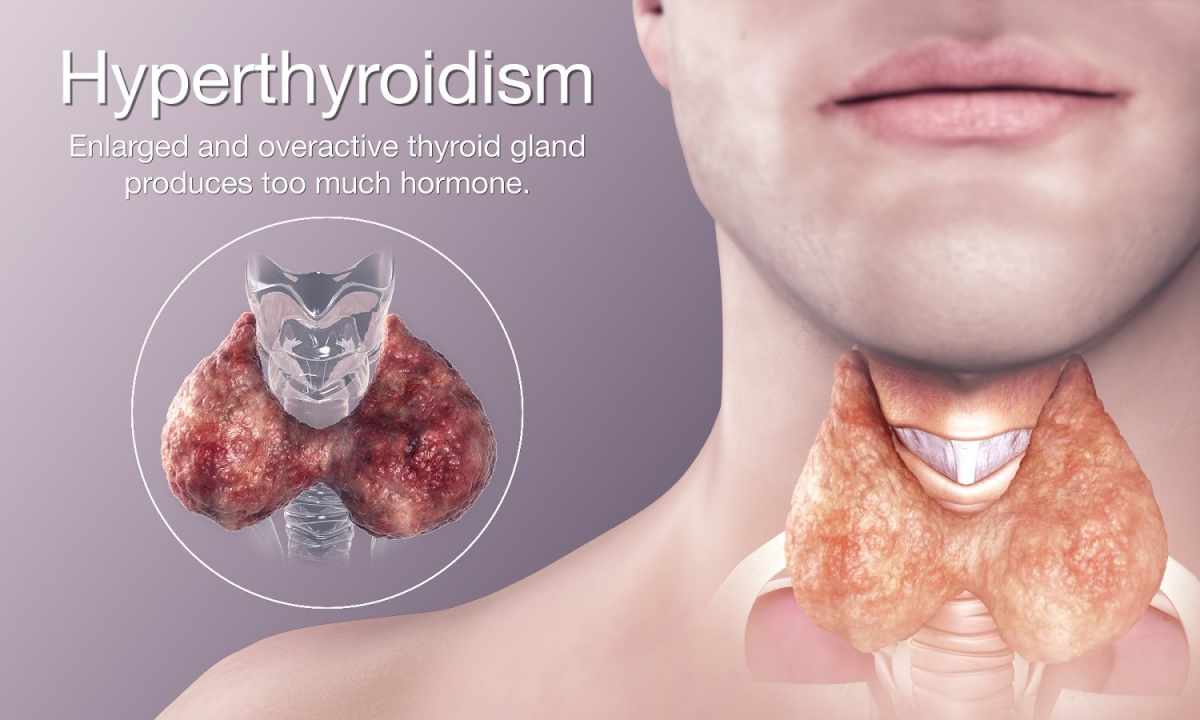The thyroid gland is a major body of an endocrine system of the person which produces tireoidny hormones. These hormones influence a metabolism and functioning of the central nervous system. At dysfunction of a thyroid gland there can be such serious diseases as gipoterioz and a diffusion craw. For detection of a disease of gland can use various methods of diagnostics.
Palpation of a thyroid gland
At some diseases not only function of gland is broken, but also there are changes of physiological character. The thyroid gland can increase in a size, in fabrics of body knots, consolidations and symptoms of a craw can appear. For primary diagnostics the doctor-endocrinologist uses such method of survey as a palpation. This simple research, the doctor asks the patient to take a usual sip and at the time of swallowing probes fingers area of a neck. If the thyroid gland is strongly affected, then at a palpation the patient can feel severe pain. The palpation allows to draw only preliminary conclusions, for more exact diagnostics tool and laboratory methods of a research are used.
Tool diagnostics of a thyroid gland
Ultrasound examination of a thyroid gland allows to estimate structure of fabric of body. It is possible to determine gland volume by ultrasonography, to investigate a blood-groove in fabric of body, to find knots and to measure their size. On ultrasonography of a thyroid gland the doctor-endocrinologist channelizes if at a palpation any changes were found.
If by results of ultrasonography big nodal formations in gland tissues were found, then to the patient the punktsionny biopsy can be appointed. This inspection allows to reveal the nature of a new growth and to exclude oncological process. The doctor by means of a thin needle gets into a cavity of a craw and takes fabric samples. The puncture is surely carried out under ultrasonography control. At malignancies in a thyroid gland the stsintigrafiya is carried out. This inspection allows to reveal prevalence of oncological process and to find metastases. In the course of this inspection enter a certain amount of radioactive materials into a human body. In fabric of body it is possible to determine defeat zones by the centers of absorption of radioactive iodine.
Laboratory diagnostics of a thyroid gland
From a vein on hormones it is possible to define a functional condition of gland by blood test, that is to understand, how well the body performs the function. Blood on the analysis undertakes strictly on an empty stomach. Within laboratory diagnostics most often determine the TTG level, T3 and T4.TTG - it is tireotropny hormone which develops a hypophysis, by means of this hormone there is a regulation of endocrine function of a thyroid gland. The TTG level will depend on the level of hormones of gland. If the level of hormones of a thyroid gland goes down, then the hypophysis begins to produce actively tireotropny hormone, and the TTG level in blood increases. If the thyroid gland develops excess of hormones, then the TTG level in blood will be below norm. The t3 is a hormone triyodtironin which is developed by a thyroid gland. The analysis is appointed to T3 level at suspicion on gipertireoz. T4 is a hormone thyroxine which also belongs to hormones of a thyroid gland. This hormone has bigger value for definition of hormonal violations, than T3. The increased T4 level indicates existence of a gipertireoz, and lowered – on existence of a hypothyroidism.

